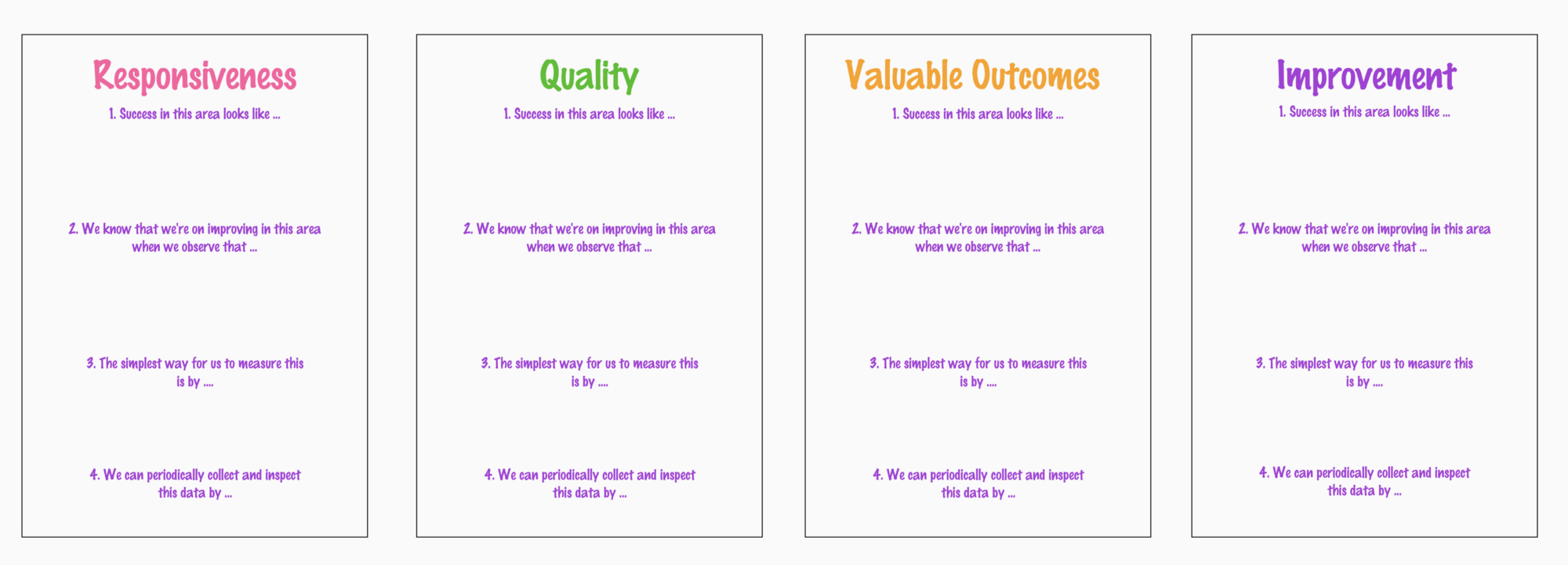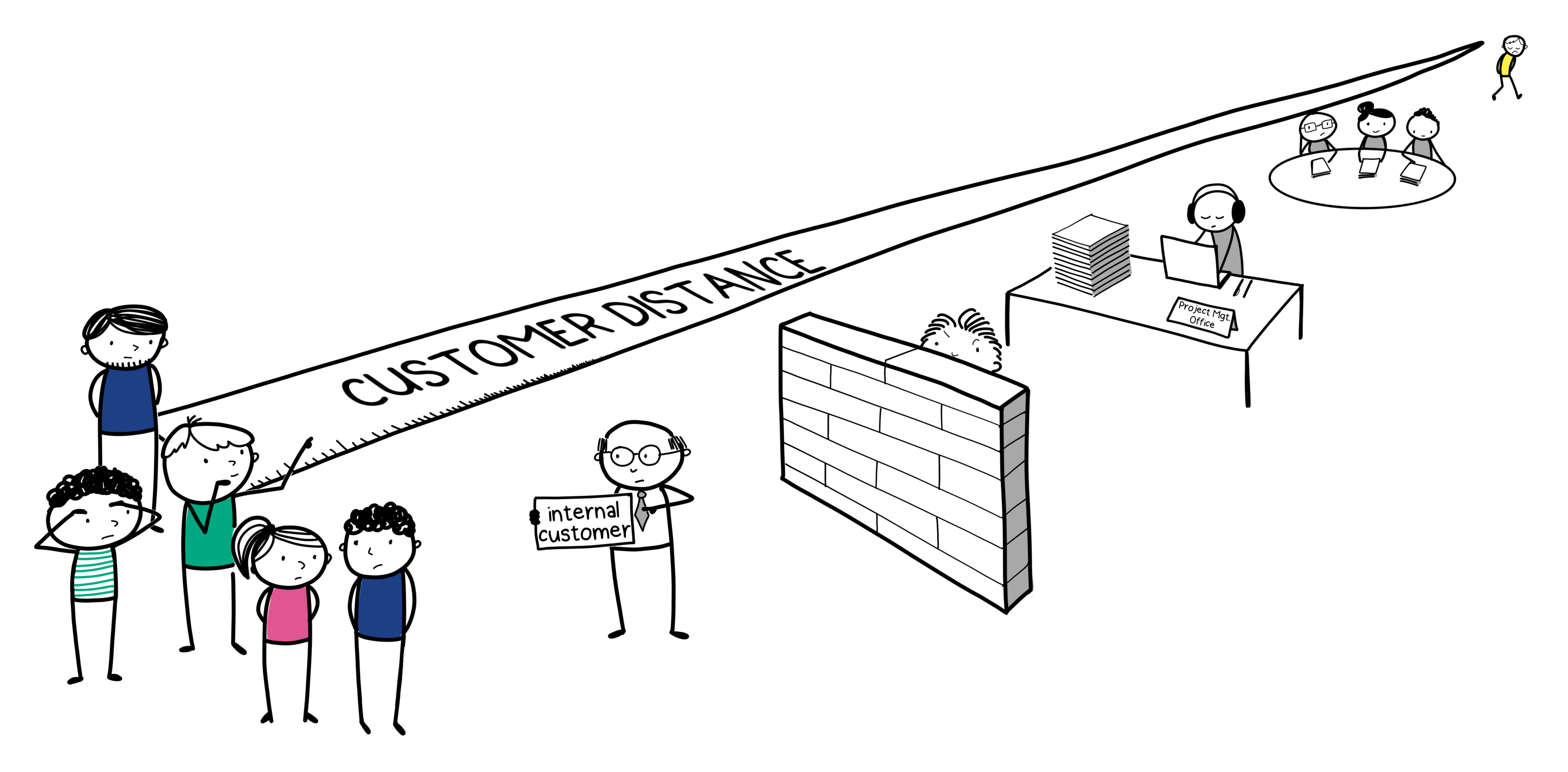Every Scrum Team understands the value of metrics, but so many of them also struggle to use them effectively. This ties into our own experience with Scrum Teams as well. When we started with Scrum, about 12 years ago, metrics were one of the first things we started experimenting with. How else could we determine if we were successful? So we decided to measure the number of story points we delivered per Sprint, tracked how many hours everyone was working on the items of the Sprint Backlog, and measured team happiness. In hindsight, none of these metrics made sense. Based on the metrics, we were doing great. But “in reality”, our product was full of bugs, stakeholders were unhappy, and team morale was low.

Measuring output can quickly result in Zombie Scrum, instead measure the outcome.
Over time, we learned to make a distinction between useless and useful metrics. In short, measuring the output is often useless and can lead to Zombie Scrum, measuring the outcome is useful and helps you do Professional Scrum. Also, don’t use happiness metrics, but measure team morale.
In the article “Stop Measuring The Pizzas And The Cooks” we describe why output-oriented metrics are mostly a waste of time in software- and product development. You can do really well on your output (many items delivered) and still go bankrupt (low sales, unhappy customers). You can run a profitable business (high margin of profit, many returning customers) even when your output is low (few items delivered, small team). Makes sense, right?
This sounds nice, right? But what are examples of outcome-oriented metrics? How can you start with these metrics? Who should be involved? What else is useful to measure?
We decided to help you find an answer to these questions with our do-it-yourself workshops and experiments. Not only do these workshops give you specific suggestions, they also include a step-by-step approach to use them and help you move in the right direction. The four workshops are:
- Identify The Metrics That Are Most Relevant To Your Success
- Measure And Improve How Your Environment Supports Your Team
- Use Metrics To Purposefully Move Your Team Towards Its Ambitions
- Create Transparency With The Stakeholder Distance Metric
In this blog post, we offer you a short description of these workshops. We hope it inspires you to give them a try. Once you’ve used them, let us know the results, let’s learn and grow, together!
Note that we ask for a small donation in return for each workshop (5 USD). You can also support us on Patreon to download our digital content for free (note that this benefit starts from the “Contributor”-tier and onward).
Workshop #1: Identify The Metrics That Are Most Relevant To Your Success
The Scrum framework offers teams a great way to learn. Every iteration brings the potential for new ideas and improvements. This is what transparency, inspection, and adaptation are all about. At the same time, the quality of your improvements depends on what you make transparent. We’ve been with many teams that focus exclusively on small optimizations but don’t see the bigger picture (low-quality product, unhappy customers, low morale). We’ve also been with teams that were convinced they were already at the top of their game until we identified good metrics. There is always room to improve — but you need to discover where first.
The purpose of this do-it-yourself workshop is to select a minimal set of good metrics for your team, and to stay away from “vanity metrics”. The illustration below shows the four areas in which we would expect outcomes. Increased responsiveness to changing needs, more valuable outcomes, and improved quality. Overall, we would also expect improvements in each of these areas over time as people learn how to collaborate more effectively as they iterate together.
This workshop contains the Liberating Structures TRIZ, Shift & Share, and 15% Solutions.

The four areas in which we would expect outcomes: Responsiveness, Quality, Valuable Outcomes, Improvement.
Workshop #2: Measure And Improve How Your Environment Supports Your Team
Is the environment in your organization supportive of Scrum, or does it cause impediments? A common complaint, and frustration, among people who try to change behavior, is that it seems to be so incredibly hard. But one important insight from social and organizational psychologists is that the behavior of people in organizations is strongly shaped by the environment.
This is often called “the smell of the place”, and it gives you a sense of the culture of an organization. Although most of us are not always aware of this, the environment we work in shapes how we behave and feel. Just like most of us feel more inspired and energized in a fresh, lush forest than in the drab, concrete jungle of a metropolitan city in the scorching heat of summer. Re-energizing people often has a lot less to do with changing people, and a lot more with changing the context those people work in.
We designed this workshop with three overlapping goals. The first is to look at how your work environment shapes your behavior as individuals and as teams. The second is to turn this into a (simple) metric that you can track, and see if you’re heading in the right direction. And finally, our goal with this workshop is to involve those people in your environment who have the power to change it (like management).
This workshop is facilitated with the Liberating Structures Impromptu Networking, 10x10 Writing, 1–2–4-ALL, and What I Need From You.
Give it a try, and identify the smells in your environment!

Workshop #3: Use Metrics To Purposefully Move Your Team Towards Its Ambitions
Improving is one thing. But how do the improvements match the purpose you have as a Scrum Team? What is your purpose? And how can you move in that direction to achieve it, and develop strategies to do so together? This is where Strategy Knotworking comes into play; a coherent set of Liberating Structures. We’ve found it to be a great approach to develop strategies with one or more teams and to do this periodically (every month or so) to purposefully work towards your ambitions together.
In this do-it-yourself workshop, we offer a simple and straightforward way to engage in Strategy Knotworking with your team. It draws in data from external metrics to drive the continuous improvement loop in your team, while also anchoring it into the purpose of your team.
This workshop makes use of the Liberating Structures 1–2–4-ALL, What — So What — Now What, Conversation Cafe, and 15% Solutions.

Workshop #4: Create Transparency With The Stakeholder Distance Metric
The Scrum framework urges teams to involve stakeholders. But many Scrum Teams struggle to do so, and that is one of the core symptoms of Zombie Scrum. This experiment is about creating transparency about the distance between developers and stakeholders and what happens because of that. With the Stakeholder Distance Metric, you track the average number of people, departments, or roles you have to go through (‘hops’) in order to convey a question or get feedback from someone who is actually paying for the product and/or actively using it.
Teams recovering from Zombie Scrum will slowly lose their fear of stakeholders. A good way to monitor recovery is to periodically re-calculate the Stakeholder Distance Metric. You can use it to drive conversations during Sprint Retrospectives on how to decrease the distance as much as possible.
So, give this free workshop a try, and that the important conversation about how to decrease the distance with your stakeholders.

Closing
We created these do-it-yourself workshops to help you improve how your team uses metrics and to only measure the things that really matter. If you tried the workshops, let us know how it went. Your thoughts, ideas, and experiences are invaluable to us. Only together, we can create even more valuable content, and unleash the superpowers of Scrum Teams, all around the world!
